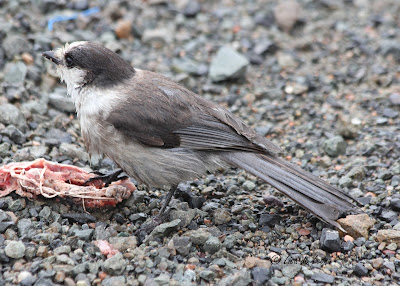This Spotted Sandpiper arrived at Second Pond more than a month ago. At that time, I found him to be very skittish and stand-offish. Not anymore! Well, maybe this is a different bird, but I don't think so.
One squeak of my bird call, and this bird came flying in immediately. He looked at me a lot, he sang to me a lot.
It was too good to be true, only four feet from me and sticking close.
When I walked, he followed.
When I turned and went the other way, so did he. What was this? Has this bird gotten lonely waiting for other shore birds to arrive.
He even dined with me. I'm sure he offered to share, but clearly this is not my favorite southern meal.
He worked hard at getting this hard-shelled beetle in to his mouth. He opened his gullet and continued to work away.
Little by little, in it went. By the way, this may be a female as the belly spots appear large. Unfortunately, there wasn't another bird about for me to compare. The white patch on the shoulder is a good identifying mark for this bird when seen from a distance, with other shorebirds, or in its winter plumage. Rapid teetering suggests the bird is nervous.
Even when eating, it bobs up and down. Its steady teetering motion is also another good way to identify this bird. Honestly, I think my tail would curl up too if I had just eaten a beetle!
At last, the beetle disappeared, but judging by the widened throat, I think it is still just sitting there and probably wiggling.
It was particularly nice to enjoy this quiet time with this Spotted Sandpiper. Opportunities like this do not happen everyday.



































































